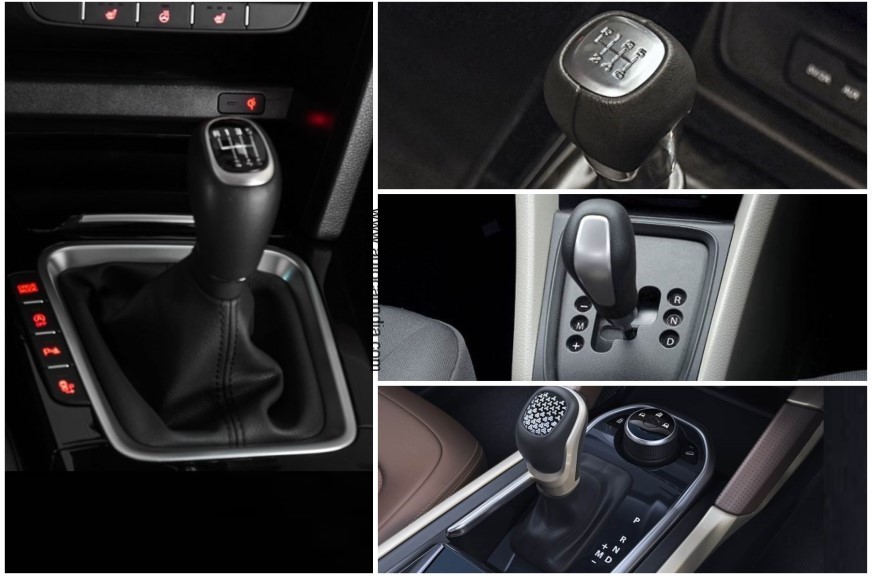Hyundai has just released details of a new gearbox option for the Venue. Marketed as iMT or an ‘Intelligent Manual Transmission’, the gearbox sure has generated a lot of curiosity and more than a few questions. Well, we’ve got your answers.
What is iMT?
Simply and quite accurately put, the iMT is a ‘clutchless manual’. Yes, at its heart it’s just a regular manual gearbox but without a clutch pedal.
How is iMT different from an AMT?
While an automated manual transmission (AMT) and an iMT are both regular manual gearboxes, in an AMT, the actuators and motors change gears and operate the clutch for you. In function, then, it’s fully automatic. Software, of course, governs when and how the shifts happen.
In an iMT, on the other hand, the software and actuators only control the clutch while you have to manually shift gears. In effect, an iMT sits sort of half way between a regular manual gearbox and an AMT.
What are the benefits of an iMT?
In this way you have complete control over what gear your car is in and you don’t have to rely on the software getting it right. Thus, in situations like coming down a slope or overtaking, you have full control over the gearbox and you know the car will not second guess you. And this is of course without the headache of operating the clutch.
Another advantage is that by using fewer parts than an AMT (as there are no actuators for the gears required), the cost of an iMT is also closer to that of a regular manual.
Won’t an AMT in manual mode do the same?
Yes it will. However, as the iMT uses the same gear shift pattern as a standard manual gearbox, it'll be familiar and help keep track of the gear you're in; the software won't change gears on its own either so you are always in control. In an AMT or regular auto, you could lose track of the gears while manually shifting via the plus-minus lever or the paddles, especially if the gear-changing software second guesses you and shifts automatically.
How should I drive it? Do I need to lift off the accelerator when changing gears?
No, you don’t need to lift off the accelerator when shifting gears, but just like an AMT it will help smoothen things if you do. You drive it just like a manual; shift gears when you need to. There’s no clutch pedal though, which means if you’re used to a manual, you’ll need to get used to keeping your left leg still while you shift.
Is this something new? Is Hyundai the first with this?
Not really. Globally, clutchless manuals have been around for a while now. Ferrari had one on the Mondial in the late 80’s-early 90’s, where the company wanted to provide the joy of shifting through its famed gear-gate but without the need to operate a heavy clutch.
In India, Hero Honda launched a version of its Street Step-Thru moped with a similar system. For cars, aftermarket clutchless kits have also been around for a while too. Perhaps you’d have seen them advertised at the back of old Autocar India issues.
Interestingly, Kia also announced the same system for its upcoming Sonet back at the Expo this year. However, the Venue with the iMT will likely be the first to hit the market.
Can an iMT shift gears automatically also?
Not in the case of Hyundai’s unit. But there are other gearboxes that do this. Thus you can shift gears yourself and be completely in control or, if you like, just leave it entirely to the system. There is typically a switch on the gear lever or the dashboard that allows you to have control over this.
Are there any drawbacks of an iMT?
Yes. Just like an AMT, gearshifts aren’t as smooth as the system relies on a single clutch that has to be modulated by an actuator. On a side note, this is where a dual-clutch auto transmission comes in - in principle, it is similar to a regular manual gearbox, but comes with two clutches to enable quicker, smoother shifts.
So how is a dual-clutch transmission different from other autoboxes?
As we’ve said above, a dual-clutch auto transmission works on a similar principle to a regular manual. However, it has two clutches and input shafts - one handles all odd gears and the other, even - thus when one gear is engaged and its clutch is transmitting power to the wheels, the other clutch is already ready to engage the next pre-selected gear. While one clutch is disengaging, the other is already engaging. Thus keeping shifts quick and smooth.
Traditional auto ‘boxes - often referred to as torque convertors - and CVT’s on the other hand, are completely different in construction. While a manual, iMT, AMT and DCT, use helical gears on input and output shafts with a mechanical clutch, a traditional auto ‘box uses an entirely different construction, called a planetary gear system, and a fluid clutch called a fluid coupling or more accurately, in an automobile’s case, a torque convertor. The clutch being a fluid device ensures that the engine does not stall when the car is stationary.
A CVT, again, is something entirely different too. It uses two cones (input and output) with a belt connecting the two. By moving the belt across the varying diameter of the cones, different ‘effective gear ratios’ are achieved. For a clutch CVTs use either fluid coupling or even a centrifugal clutch device.
| Gearboxes explained | ||||||
|---|---|---|---|---|---|---|
| Manual | iMT | AMT | Dual-clutch | CVT | Traditional AT | |
| Gearbox construction | Input & output shaft | Input & output shaft | Input & output shaft | Two Input & one output shaft | Dual cones | Planetary gears |
| Clutch | Single | Single | Single | Dual | Fluid coupling-torque convertor /Centrifugal | Fluid coupling-torque convertor |
| Gearshifting | Manual | Manual | Auto | Auto | Auto | Auto |
| Clutch work | Manual | Auto | Auto | Auto | Auto | Auto |
Also see:


